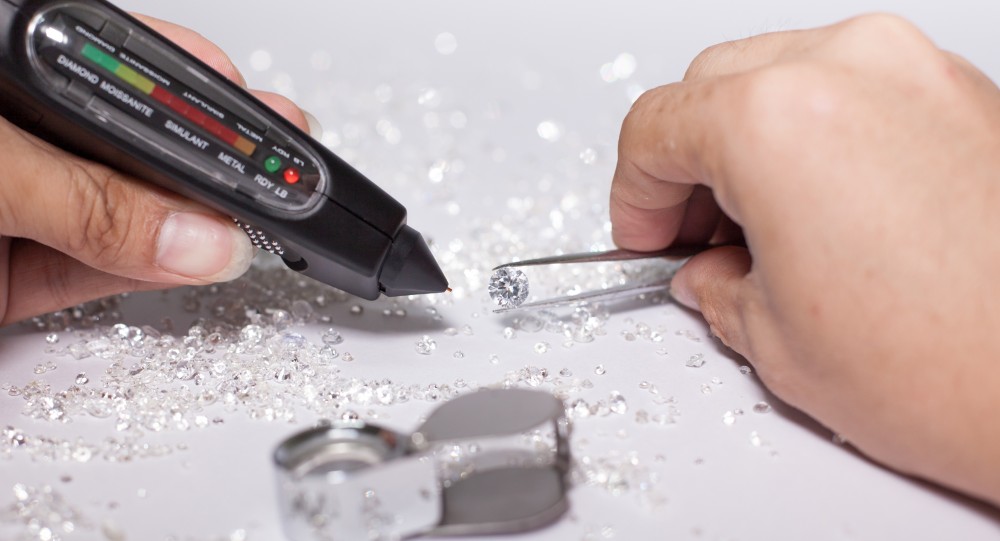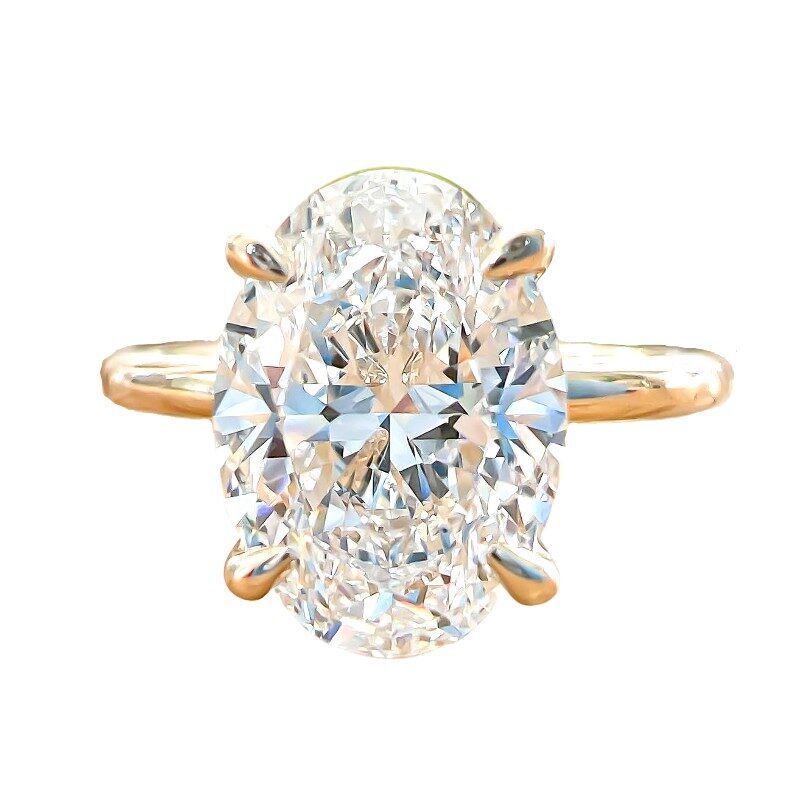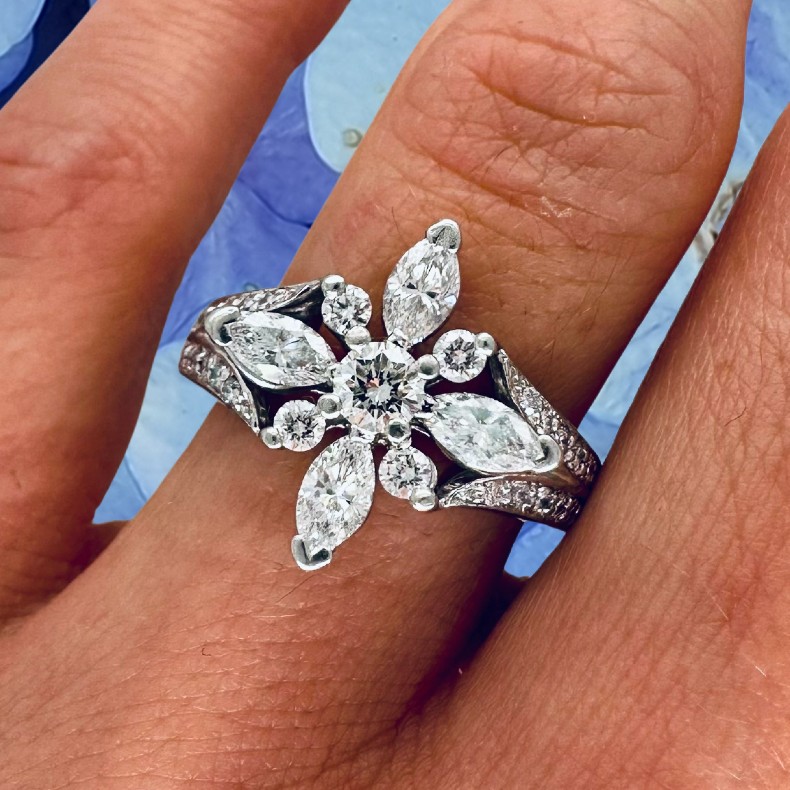The demand for lab grown diamonds is as high as ever, meaning a lot of people continue purchasing them every year. But this isn’t surprising, considering that they are significantly cheaper than the natural ones and are also considered more earth-friendly.
But now you may be wondering; since lab grown diamonds are as good as the natural ones, does that mean that they pass a diamond tester? Continue reading to find out.
So…..Do Lab Grown Diamonds Pass a Diamond Tester?
The answer is short and simple; yes, they do. And now that you know this, it’s time to dive into the topic of the diamond testers and how they work.
What Is a Diamond Tester and How Does It Work?
A diamond tester is a handheld device that the jewelers use to determine if the specific gemstone qualifies as a real diamond. It is designed to distinguish a diamond from other gemstones as well as diamond stimulants, such as sapphire, and cubic zirconia, which have different chemical and physical properties.
So how does a tester work? It sends an electric current or a certain amount of heat into a stone, after which it measures how fast it travels through it. And that’s it; the testing process is over.
You see, due to its exceptional electrical and thermal conductivity, a diamond will conduct electricity or heat faster compared to other stones. Therefore, if a tester detects a high rate of conductivity, it will be an indication that the stone in question is a diamond.
However, it’s worth mentioning that testing a lab diamond can be a little more complicated compared to testing a natural one since it is grown differently. This results in different thermal conductivity levels and crystal densities. That’s why in some cases, certain lab diamonds, especially HPHT ones, can test as Moissanite on the diamond tester, requiring further testing.
What Types of Diamonds Can Pass the Diamond Tester?
Lab diamonds, natural diamonds as well as non-diamond moissanite can all pass a diamond tester because it only tests a gem’s ability to conduct heat.
The Diamond Tester Types
There are two types of diamond testers that are commonly used:
* Thermal conductivity testers, which measure how fast the stone conducts heat
* Electrical conductivity testers, which measure how effectively or well the stone conducts electricity
For more accurate results, some diamond testers tend to combine both of these methods.
Is It Possible to Tell the Difference Between Laboratory Grown Diamonds and the Natural Ones?
Optically, physically, and chemically, lab-grown diamonds are exactly the same as the natural ones. In other words, they have identical beautiful sparkles and crystal structures to natural diamonds. They are also known for their hardness, which makes them as durable as real diamonds. The problem here at Diamond Exchange Houston is that we purchase diamonds daily. We need to be extremely careful not to buy a lab-grown diamond for the price of a natural diamond accidentally.
Although you can distinguish a lab diamond from a natural one by reviewing its certificate laser inscription underneath the scope. A lab diamond is usually marked as “LG” or “lab grown”, while a natural one doesn’t have such prefixes. Sometimes the lab diamond might not be laser inscribed or the inscription has been taken off so we have very expensive tools at our Houston office that can help us tell the difference.
As for Gem scientists, they can tell the difference between the two by using advanced magnification, laser techniques, and fluorescence.
How Are Laboratory-Grown Diamonds Created?
Lab diamonds are created using either of the two processes; CVD and HPHT.
HPHT or High Pressure/High Temperature is the process that mimics the manner the natural diamonds grow, subjecting carbon to very high temperatures and then pressing it together. As you may tell, this method requires a great amount of energy.
As for CVD or Chemical Vapor Deposition, a combination of methane gas and hydrogen is placed in the chamber alongside the seed crystal. Then microwave power starts heating a chamber, eventually reaching a high temperature and exciting the gas. And that’s exactly when a diamond grows on a seed crystal.
It’s also worth mentioning that a CVD method is significantly cheaper compared to an HPHT one, which also makes it a more favored option for producing diamonds.
Do Lab Diamonds Come in Various Colors?
Yes, they do. These colors include blue, green, purple, blue, pink, brown, orange and yellow. Green, red, pink, blue, orange, and purple are the most rare, while yellow and brown are the most common ones.
Some of the Most Popular Diamond Shapes:
They can make a lab grown diamond into any cut of diamond is available. Below are some of the most popular shapes that customers request from us.
1. Princess Cut
This diamond shape belongs to the category of “fancy” shapes and is the favorite of many due to its large appearance and impressive brilliance. It’s also very versatile and goes especially well with other types of jewelry.
2. Cushion Cut
A cushion diamond cut is known for its exquisite appeal, tremendous brilliance, and affordability, which are the reasons people often opt for this beautiful diamond shape.
3. Asscher
This shape has a very unique and distinct look that can remind you of the Art Deco style and Roaring Twenties. Therefore, the Asscher diamond shape can be ideal for retro settings and jewelry.
4. Emerald
An emerald diamond shape is one that greatly differs from most diamond shapes as it doesn’t reflect the light the same way the others do. Instead, it reflects the lights just like mirrors or fancy glass.
5. Heart
A heart-shaped diamond is yet another popular option many people opt for. It is also the fanciest because of its unusual shape. Despite the fact that it doesn’t lack attention or romantic appeal, it still has a smaller surface compared to the brilliant as well as the majority of fancy cuts.
6. Marquise
This is similar to an oval-shaped diamond and has excellent brilliance. Its extended length creates a larger diamond surface as well as the appearance of the larger diamond.
7. Round Brilliant
A round brilliant is the most common and classic diamond shape adored by a lot of people. It maximizes the light reflection, which guarantees tremendous brilliance. However, it tends to be far more expensive because of its high demand.
Where to Find High-quality Laboratory Grown Diamonds?
If you are looking for beautiful lab grown diamonds with exceptional quality, look no further than Diamond Exchange Houston which offers lab grown diamonds of all shapes and sizes. We have been creating a a large amount of jewelry items including custom engagement rings with lab grown diamonds over the last several years. To get your next piece contact the experts at Diamond Exchange Houston today.





